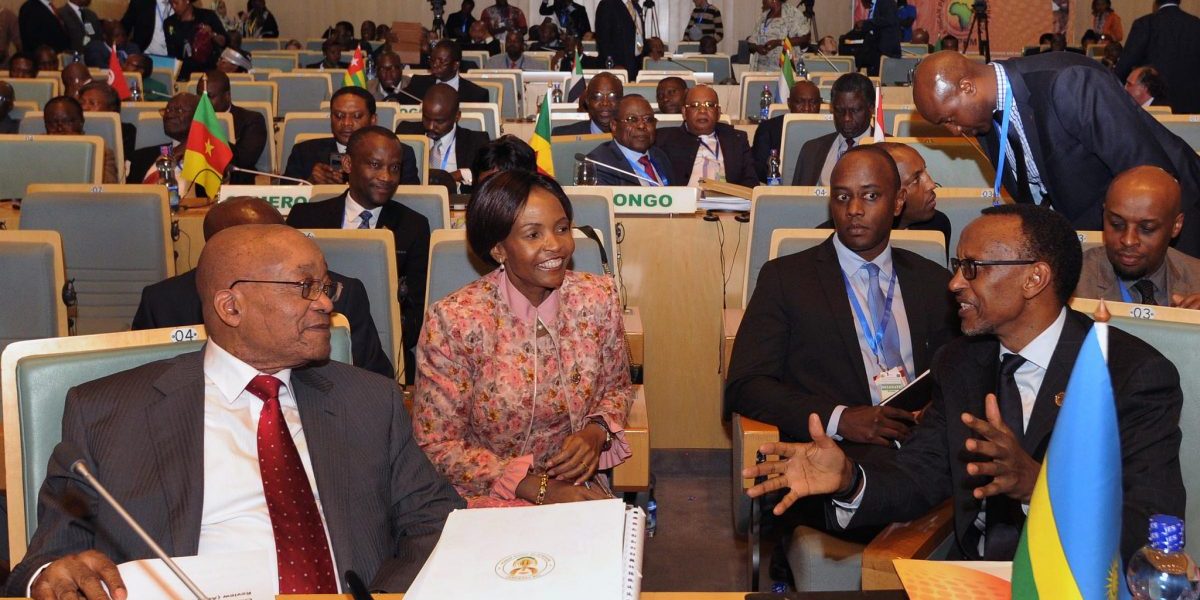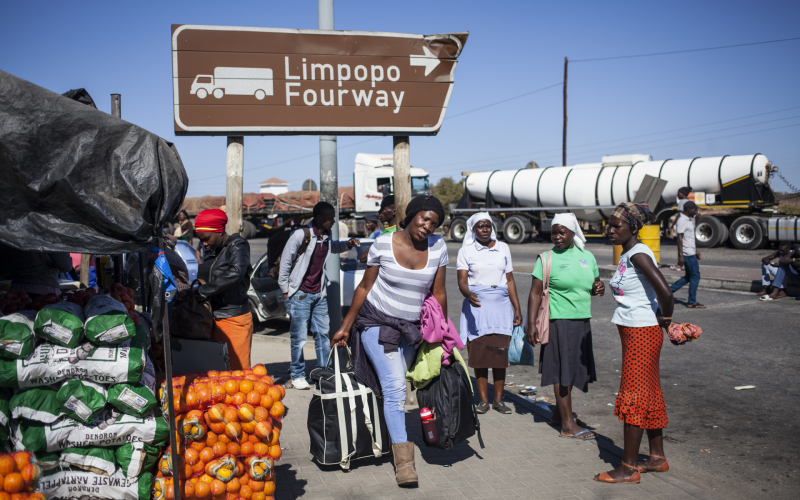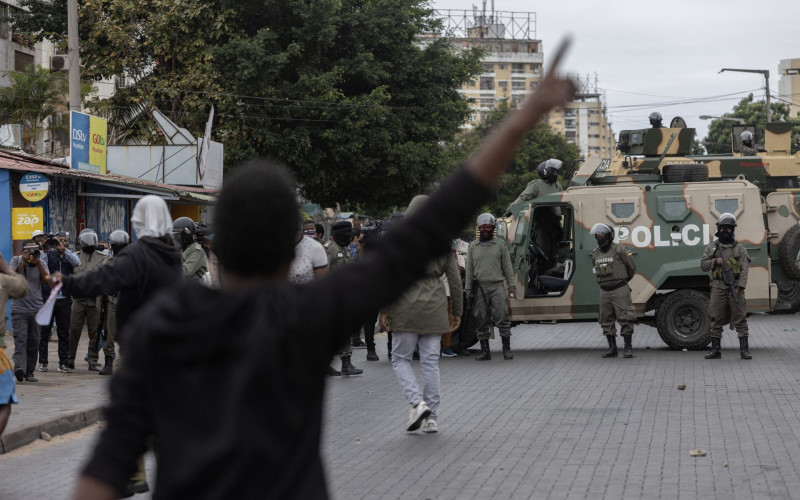Based in part on reading Ross Herbert and Steven Gruzd’s book, I would argue that it is time to close the chapter on that particular phrase. There should no longer be equivocation on this statement; the APRM represents a quantum leap forward in the thinking on how to address the many governance challenges which exist in Africa today. The mechanism is so innovative, and so ambitious in its scope, that the fact that Herbert and Gruzd were able to draw for their book on the in-depth experiences of five African states which have undertaken the process is even more remarkable, for reasons which will become apparent later.
Drawing its inspiration from the model originally used by the Organisation for Economic Co-operation and Development (OECD) states, the APRM has not so much expanded the terms of reference used in OECD enquiries as it has taken the concept of national peer review to the next level. Already the APRM design, institutional make-up and methodologies are generating interest in South American and South-East Asian communities, and several of the developed nations are also closely monitoring the mechanism with interest.
One of the many intriguing innovations of the APRM is the platform provided for non-governmental stakeholders within the mechanism’s processes and institutions. Both corporate and civil society stakeholder input into the APRM is a requirement, and this tri-partite arrangement between government, the corporate sector and civil society has paved the way for an intriguing examination by the authors of some of the dynamics which play out when the three parties participate in the pursuit of a common objective. That objective in the context of the national ARPM process is to contribute to a country report which reviews the country’s governance practices and institutions, acknowledging strengths and highlighting weaknesses. Already these reports have proven accurate gauges of the realities on the ground in African states. Concerns noted in the Kenyan report on the dangers of ethnic politics later proved accurate during election-related ethnic clashes in Kenya in 2007. The concerns raised in South Africa over xenophobic tendencies in the townships were also proven valid with the attacks on foreigners throughout South Africa in mid-2008, despite the South African government’s protestations in its official response to the country report.
Based solely on the importance of the APRM process and its increasing relevance to people on the continent (more than two-thirds of Africa’s population reside in countries which have formally acceded to the APRM), and the accuracy of the national reports in highlighting areas of concern, this volume is worth reading. However, Herbert and Gruzd have also produced a resource which balances the need for academic rigour and technical proficiency with the ease-of-use style that is characteristic of so many of SAIIA’s publications. Interspersing the narrative of an unfolding and evolving APRM process with precise and often compelling analysis, the authors reflect a clear understanding of the issues involved as well as a profound respect for the APRM as an institution and process. This is no small task, as one is increasingly reminded throughout the book, taking into consideration the sometimes chronic shortage of existing resources on the early APRM process. It is an achievement all by itself to both present a coherent and informed picture of the APRM, both as process and institution, in countries which were quite literally making up the rules as they went along, and at local, national and continental levels simultaneously.
As the title of the book suggests, the countries which the authors examined were entering into uncharted territory, attempting to bridge the gap between the theoretical model outlined in broad strokes in the founding documents of the Mechanism and the often messy reality of a national programme implemented under constraints. Herbert and Gruzd offer a glimpse into some of the confusion, controversy and contradiction which emerged as Ghana, Rwanda, Kenya, Mauritius and South Africa grappled with a complex, multifaceted process with little precedent to guide them. Key debates, such as the composition of the National Governing Councils, or the use of technical institutions as intermediaries in the process of drafting thematic area reports involved neither easy nor obvious decisions. The fact that the APRM not only permits but encourages diversity at the national level, in particular during a country’s self-assessment process, only added to the complexity. Even if Ghana or Rwanda had decided to adopt a particular methodology, or composed their institutions in a particular way, this did not necessarily mean that their approach was the preferred approach for the others. The fact that the APRM guidelines remained deliberately vague in some areas further complicated matters, and always in the background loomed the impending deadlines attached to processes and timelines.
In this respect, the APRM architects appear to have underestimated the enormity of their design – allowing for a mere nine months in which a country was to establish national APRM structures, implement a national self-assessment process across four distinct governance themes, produce a draft report, validate the report and entertain an official mission from the APRM secretariat – all the while maintaining inclusive, broad-based participation from all available stakeholders, as well as safe-guarding the integrity of the overall process. Not surprisingly, none of the pioneers came anywhere close to completing the process in the nine-month period stipulated for them. According to Herbert and Gruzd, Kenya came closest to achieving this objective at 20 months. Exactly how each country attempted to complete a rigorous, fully-inclusive, balanced, and timely national self-assessment, sometimes with a severely limited budget – and how this self-assessment was incorporated into the final APRM report – is outlined in detail in five separate chapters on the five country case studies in the book. These chapters are incredibly rich sources of information on the national processes in the pioneer countries, examining for each the institutional set-up, their research/data capturing methodologies, the interface between the national APR structures and the APR secretariat and Country Review teams, inputs from the countries’ peers in the APR Forum, and lessons learnt.
The case studies are prefaced by a section introducing the APRM in broad strokes; a commentary on key issues in the establishment of national institutions and methodologies; and a section which draws out some of the lessons learnt from the early country experiences. Additionally, the authors went to great lengths to include a fifth section titled ‘Appendices’ which includes an abridged summary of the official APRM documents and a rich cross-section of potential resources and suggestions for those with an interest in how to undertake a peer review exercise according to the APRM model. This section is clearly based on Herbert and Gruzd’s extensive training and capacity building experience in the APRM, and has been refined for use in the book with an additional CD-ROM toolkit included for training and information-sharing purposes. Of particular interest on the CD is a collection of video interviews conducted by the authors with some of the key actors involved in the pioneer countries – including APR Panel of Eminent Persons member Ambassador Bethuel Kiplagat, and members of national governing councils, focal points and civil society.
Herbert and Gruzd’s publication offers for the first time a coherent picture of the overall process as it is unfolding, yet at times they clearly and deliberately favour a particular method, design or ideology. The issue of national leadership is a case in point, where the authors seem to favour a model which resembles the Ghanaian model of a compact and completely independent council, unattached to any government ministry or body. Making the case for this model is not difficult based on its success in Ghana and the relative benefits of a smaller and independent unit compared to Rwanda’s 50-member commission or Kenya’s 33-member council. Yet the counter argument also has some merit when weighing the benefits of efficiency against those of broad-based ownership of the APRM process. Ghana’s model of appointing seven distinguished Ghanaians outside of the national government was largely a technocratic process copying the APR Panel of Eminent persons making it highly efficient, but doing nothing for broad-based ownership at the level of the country’s most significant APRM structure. However, Kenya’s 33-member council included 20 members directly and democratically elected by civil society organisations in Kenya, a distinction which the CSO community actively fought for in the process of forming Kenya’s governing council. This latter approach sacrificed some of the efficiency of the Ghana model for more broadly consultative inclusions in the Kenyan body.
Furthermore, Herbert and Gruzd argue strongly for the independence of the National Governing Council/Commission from the direct influence of government, citing the importance of in their words ‘objective, non-partisan’ leadership of the process. While objective, non-partisan leadership is clearly desirable, it does not necessarily follow that turning the body over to civil society either precludes government interference, or ensures the originally stated intentions. There is an assumption here which suggests that a leadership made up of non-governmental actors is more likely to be ‘objective’ and ‘non-partisan’, yet this was clearly not the case in Kenya or Mauritius, two of the pioneer states where civil society shortcomings permeated the national process. In Kenya, the intervention of the Minister of Planning and Development (the government focal point) acted as a positive catalyst to reinvigorate the national self-assessment process after some civil society representatives had stalled progress, and the weakness of civil society in Mauritius continued to adversely affect that country’s completion of the national self-assessment process significantly. Herbert and Gruzd might point out, validly perhaps, that the South African experience was quite the reverse, with a strong central government largely dominant, and other actors at times seemingly just making up the numbers. Ghana, as already mentioned, appeared to benefit from the non-partisan model as well, highlighting the complexity of the terrain in which Herbert and Gruzd are navigating – where what is good for one nation can be toxic for another.
The authors’ convictions enhance the overall quality of the book rather than diminish it. As Professor SKB Assante, Ghanaian Governing Council member, remarks in the foreword:
While one may not necessarily accept every idea or rationale that the authors have proffered, we can all agree that Herbert & Gruzd have clearly and concisely articulated the main themes of the APRM. Their approach will surely stimulate greater attention of scholars, researchers and policy makers…to further intellectual exploration of the prospects and promise of the APRM process.
As to the first part of Professor Assante’s statement, I would tend to agree, and as to the second, I sincerely hope that time will prove him right. The APRM has emerged at a critical juncture in Africa’s governance history, and it is only through more and better analysis and engagement from a multitude of stakeholders that the mechanism can move forward. This book may be the first step on that path.
This review first appeared in the South African Journal of International Affairs, Volume 15, Number 1, November 2008.







